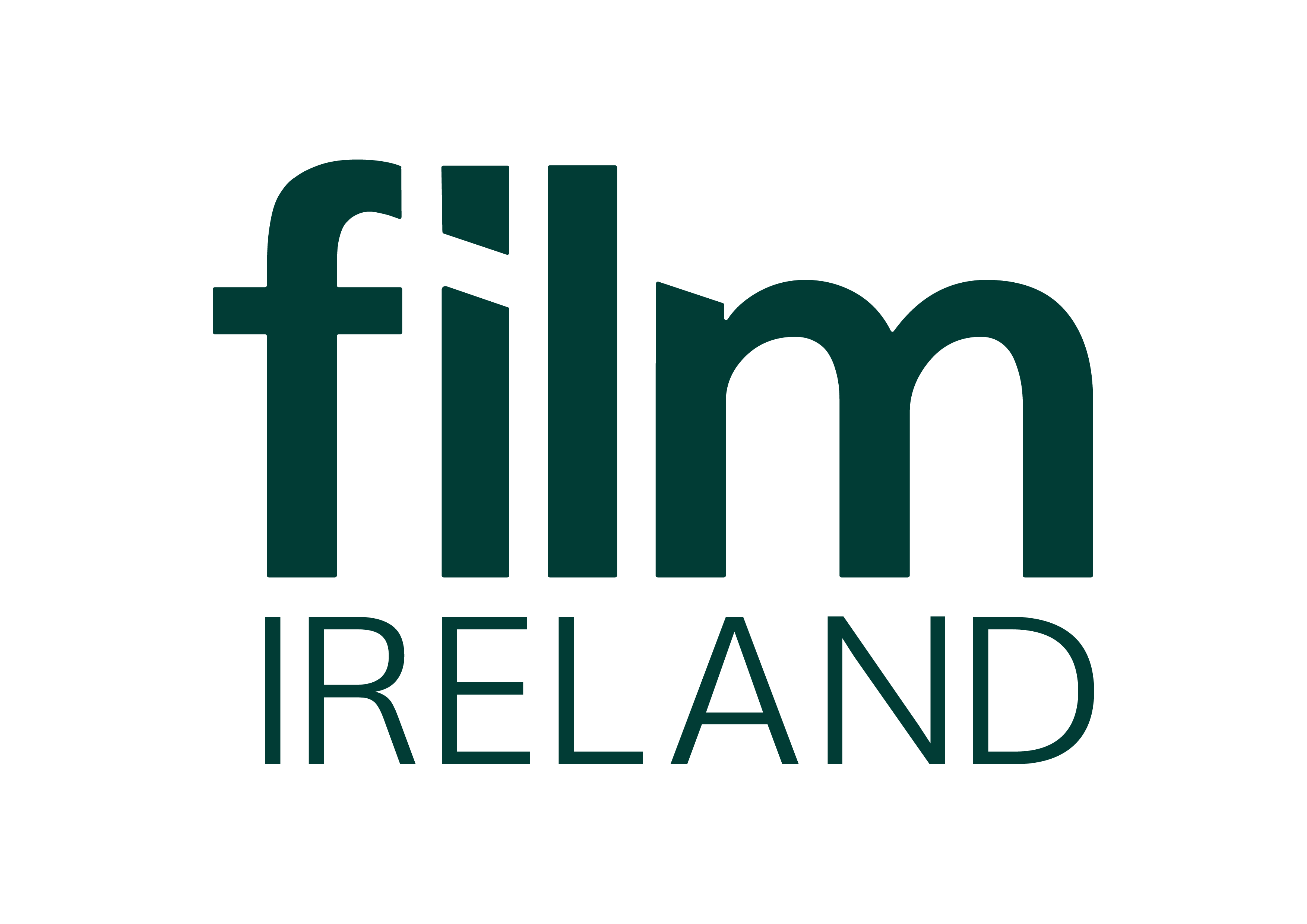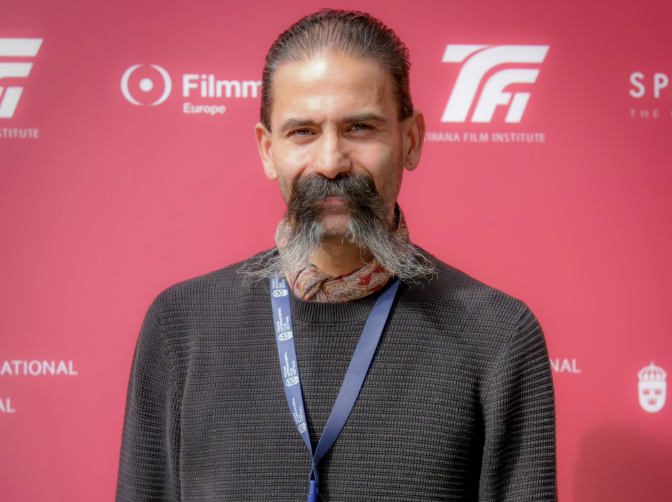Ahead of the Irish premiere at the Light House Cinema this May, Assistant Editor Dev Murray talks with Rouzbeh Rashidi about his latest experimental feature film, Dreaming Is Not Sleeping.
How would you describe Dreaming Is Not Sleeping?
Dreaming Is Not Sleeping is an experimental feature-length film essay that represents the second phase of my journey into avant-garde cinema—a phase initiated with my 2023 film, Elpis. From 2000 to 2019, my work was characterised by a distinct genre of experimental cinema: deeply collaborative projects involving actors and crews of varying sizes, notably created without any written scripts. This text-less approach emphasised immediacy, spontaneity, and the urgency of the moment, resulting in a series of feature-length films with a coherent rhythm, mood, atmosphere, and fragmented storytelling.
The onset of the pandemic led me into a period of hibernation and hiatus, during which I developed Elpis. For the first time in my career, I began to write screenplays—not in the traditional sense, but akin to Andrei Tarkovsky's approach in Mirror, where the text serves as a series of poetic encapsulations of ideas, images, and sounds. This synergy and energy informed the script for Elpis, a film that took four years to complete. Elpis is a poetic essay film exploring the effects of the Iran–Iraq War and its psychological impact, narrated through the voice of a woman writing a book. It delves into themes such as war, diaspora, immigration, love, and alienation, using sensory and experiential techniques, and showcases ethereal landscapes in Estonia, Latvia, Ireland, and Germany.
With Dreaming Is Not Sleeping, I continued to explore these ideas, crafting a screenplay that manifests as a spectral, ghostly, phantasmagorical voice-over. This narration hovers over the film like a cryptic deity, guiding the audience on a journey through desolate landscapes and ancient ruins. The film contemplates themes of memory, existence, and time, blurring the lines between past, present, and future, and reflecting on human impermanence and defiance of time.
While Elpis was deeply rooted in my personal experiences of the Iran–Iraq War, Dreaming Is Not Sleeping ventures into more philosophical realms. The film delves into concepts that have long intrigued me, particularly clairvoyance, memory, and the impermanent nature of life. It serves as an elaboration of these philosophical ideas, inviting viewers to reflect on their own perceptions of existence and the ephemeral traces we leave upon the cosmos.
In essence, Dreaming Is Not Sleeping represents a continuation and expansion of my film essay approach, blending poetic narration with immersive, dreamlike aesthetics to explore the depths of human consciousness and the transient nature of our lives.
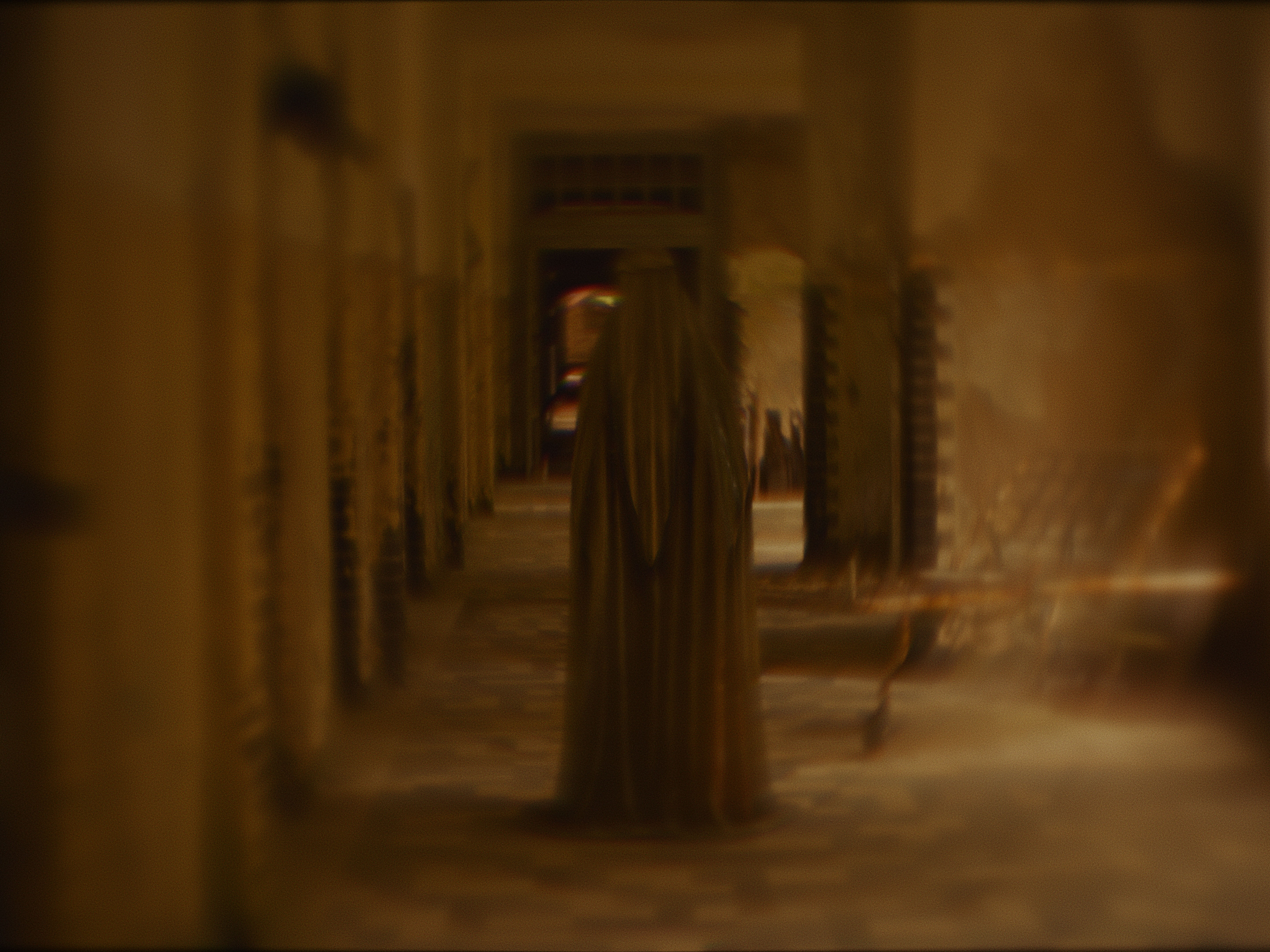
You spent two years immersing yourself in abandoned and haunting landscapes across Europe. What drew you to these environments, and how did they inform the film?
Over the course of two years, I immersed myself in the haunting liminal spaces of Europe—its derelict architecture, skeletal ruins, and landscapes suspended in decay—driven by a visceral, almost ontological compulsion. These sites, with their fractured geometries and spectral histories, functioned as mirrors to the psyche, externalising the uncanny tension between presence and absence, memory and oblivion. As a human navigating the Anthropocene, I found myself drawn to these places not as a documentarian cataloging empirical facts (à la National Geographic's taxonomic gaze) but as a psychonaut traversing the terra incognita of the subconscious. My journey was a hermeneutic pursuit, an effort to reconcile the internal chasm between being and meaning through what Walter Benjamin termed the "aura" of decay—the manner in which abandoned spaces materialise time's passage as both palimpsest and prophecy.
This pilgrimage centred less on the ruins themselves than on their resonance as existential metaphors. Like Tarkovsky's Stalker (1979), in which the Zone's decaying topography becomes a psychogeographic map of human longing, these sites embodied what Julia Kristeva theorizes as "abjection": the confrontation with that which we repress to sustain identity. Their grotesque beauty, a fusion of the sublime and the ruinous, evoked Heidegger's concept of Dasein—being thrown into a world where meaning is perpetually deferred. By engaging with these spaces, I sought a pharmakon—a Derridean remedy-poison—to mediate the dissonance of modern existence. The act of photographing peeling frescoes or collapsing factories became a ritual of anamnesis, a Platonic recollection of fragmented selves buried beneath the noise of contemporary life.
Cinema, here, serves as both lens and allegory. The chiaroscuro of abandoned asylums recalled the haunted frames of Béla Tarr's Werckmeister Harmonies (2000), in which desolation manifests as a metaphysical condition. Similarly, the ruins' silence echoed an entropic void, where architecture mutates into a monument to ideological collapse. My work, however, inverted the documentary impulse: rather than imposing narrative onto decay, I allowed decay to interrogate me. Like Marker's La Jetée (1962)—a film composed of still images—the project became a chronopolitical dialogue, wherein the ruin's stillness revealed the vertigo of temporal disjunction.
In this sense, the journey constituted a phenomenological experiment, a Merleau-Pontian entanglement of flesh and world. The "remedy" I sought was not catharsis but acknowledgment—of mortality, fragility, and the irreducible paradox of seeking wholeness in a fractured world. These ruins, like an abyss, demanded not conquest but surrender: a recognition that the psyche's disquiet is not a pathology to cure but a testament to the irreducible complexity of being alive.
Was there a particular image or sensation that sparked the inception of Dreaming Is Not Sleeping?
The genesis of my films—or any of my works—does not arise from a singular, epiphanic image or sensation, but rather from a slow, almost geological sedimentation of ideas, motifs, and themes. My approach to cinema diverges fundamentally from conventional directing—a role I consciously reject—as I have never directed in the traditional sense. To direct, in the industrial lexicon, implies a transactional act: the translation of scripts and preconceived narratives into visual form. I instead position myself as a poetic archaeologist of the self, excavating fragments of lived experience and reassembling them into a cinematic language that resists categorisation. I am neither an auteur in the classical sense—though my work is deeply personal—nor an experimentalist per se, as I do not fetishize innovation for its own sake. My process is organic, an extension of breathing; cinema, for me, is the residue of existence.
Each film becomes a palimpsest of the era in which it was forged—a temporal imprint of the filmmaker's psyche, where the artist's inner world coalesces with the outer reality of their historical moment. Similarly, my work is less a deliberate construction than a consequence of being—a response to the accumulated weight of years spent observing, absorbing, and metabolising the world. Cinema, in this sense, transcends narrative to evoke a durational consciousness—one that privileges subjective, irrational expression over industrial formalism.
In this film, as in others, I channel what might be called the ritualistic function of art: a synthesis of memory, emotion, and existential inquiry. My cinema is born of accretion, not ignition. It is the sum of all I have encountered, refracted through the prism of poetic intuition. To borrow Brakhage's metaphor, I do not capture images but entangle with them, allowing the film to grow rhizomatically, as if guided by an unseen mycelial logic. This is cinema as lived philosophy—a Heideggerian being-in-the-world rendered visible.
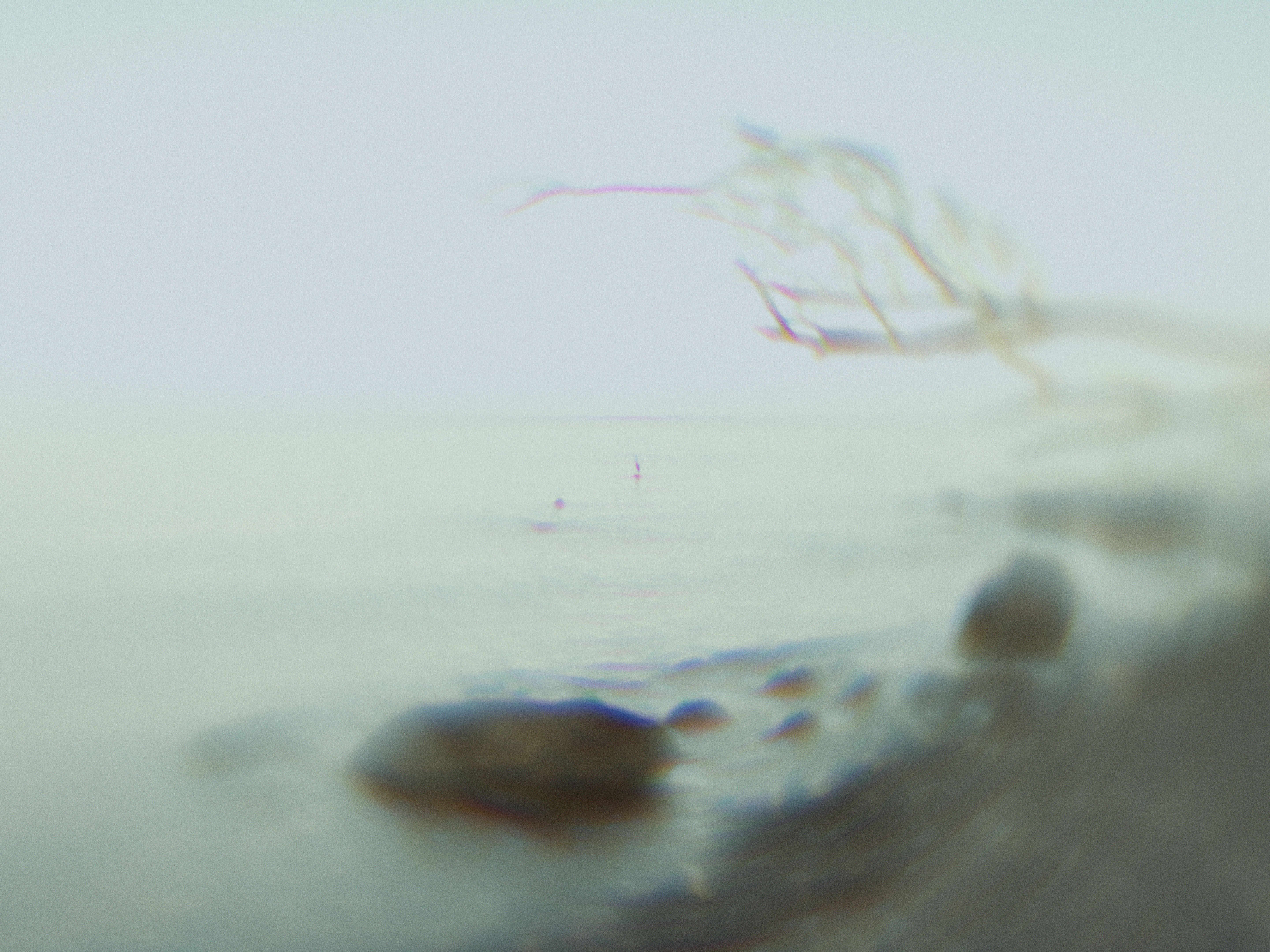
You've said that sometimes even filmmakers may not fully understand the visions they birth. Can you speak about your creative process during production; how much of the film is found in the moment versus pre-planned?
Yes, I believe that filmmakers, artists, and all creative individuals do not—and perhaps should not—fully comprehend their own visions or works. This inherent ambiguity is not a shortcoming but a vital necessity. If a creator were to wholly digest, codify, and explicate every facet of their ideas before releasing them into the world, the work would ossify into a closed system, leaving no room for the audience to imbue it with their own interpretations, emotions, or discoveries. A work's meaning is born through the reader's engagement, not the creator's intent—art thrives in its unfinishedness. It is the liminal space between conception and completion, the half-formed and the half-structured, that invites the audience to become co-creators, excavating latent truths the artists themselves may not have recognised.
The creative process, in this sense, mirrors existence itself. When we wake each morning, we may sketch a rough outline for the day—a narrative scaffold—but life, like art, resists total authorship. We navigate the unforeseen with a blend of intuition, impulse, and half-remembered rehearsals, accumulating experiences that remain partially "undigested." These fragments—what I term dreams—are not failures of comprehension but residues of the unconscious, akin to the surrealist ethos in which logic yields to the irrational. Just as we carry the day's unresolved moments into sleep, so too do artists channel the unresolved into their work. Filmmaking, then, becomes a ritual of "living twice": first as lived experience, then as alchemized artifact. The camera, like memory, is an imperfect sieve—capturing but never fully containing the chaos of existence.
This dissolution of boundaries between art and life evokes a "mutation"—a fluid exchange between the virtual and the actual. When life and art interpenetrate, they form an organic whole: the artist's daily struggles, joys, and ambiguities seep into the work, while the act of creation retroactively reshapes the artist's understanding of their own life. These works reject the illusion of mastery, instead embracing vulnerability as their core ethic.
Ultimately, the creative act is a gesture of faith—not in resolution, but in openness. By leaving doors ajar, the artist acknowledges that a work's truth is not a monolith but a prism, refracting differently for each viewer. Life, too, resists tidy arcs. To create is to surrender to the unknown, to let the work breathe, mutate, and converse with the world long after the artist has stepped away. In this collapse of boundaries—between creator and audience, art and existence—we glimpse a deeper unity: the ceaseless, collaborative becoming of meaning.
You work across such a broad spectrum of image-capturing technologies, from Super 8 to thermal imaging. How do you decide which tool suits a particular scene or mood?
In my cinematic practice, I engage with a diverse array of formats, devices, and imaging technologies, yet I consciously resist the allure of technocracy—a term I borrow from political theory to critique systems in which technological expertise dominates creative expression. When transposed into the realm of art, this concept risks fostering a fetishistic pursuit of technical perfection: a hyperreal mediation of experience that prioritizes sterile precision over organic humanity. My approach instead aligns with the question concerning technology—not that tools should enframe (Gestell) our worldview, but that they ought to be wielded to disrupt normative modes of perception.
For instance, in my recent work, I paired a cutting-edge digital cinema camera—engineered to flawlessly track focus, optimise dynamic range, and render hyperrealistic images—with 19th-century Petzval lenses, whose optical "flaws" (vignetting, chromatic aberration, and soft focus) resist the camera's computational perfection. This collision of eras evokes the "aura" of analog artifacts, whose material imperfections subvert the digital apparatus's bid for total control. The tension between the lens's archaic subjectivity and the camera's algorithmic objectivity generates a dysfunctional aesthetic—a visual cancer, as it were—that destabilizes the technocratic ideal.
This methodology echoes the ethos of filmmakers who rejected technical polish in favour of poetics. Deliberate dissonances weaponize analog decay against digital hegemony. My use of antiquated optics operates within this lineage, producing a dialectical friction in which the camera's autofocus stutters, its dynamic range falters, and its programmed logic is thwarted by the lens's obstinate materiality.
The resultant images—marked by vignetted voids and spectral flares—become a battleground between past and present, analog and digital, intention and accident. This is not mere nostalgia but a deliberate de-evolution, a term I invoke to describe the regression of technological "progress" into a state of fertile chaos. The accident, I argue, is integral to technological innovation, and my work posits that dysfunction can unveil new modes of seeing. The Petzval lens, once a marvel of 19th-century engineering, now acts as a saboteur: its limitations defy the camera's pursuit of seamless replication. A negative dialectics of cinema emerges—a space in which friction between tool and artist generates meaning beyond technical mastery. The "exhausted mechanical eye" of the lens becomes a metaphor for resistance, challenging the technocratic paradigm that equates advancement with homogenisation. Each project demands its own calculus of tension: sometimes a clash of eras, sometimes a subversion of software, but always a rejection of the neoliberal myth that better tools inherently yield better art.
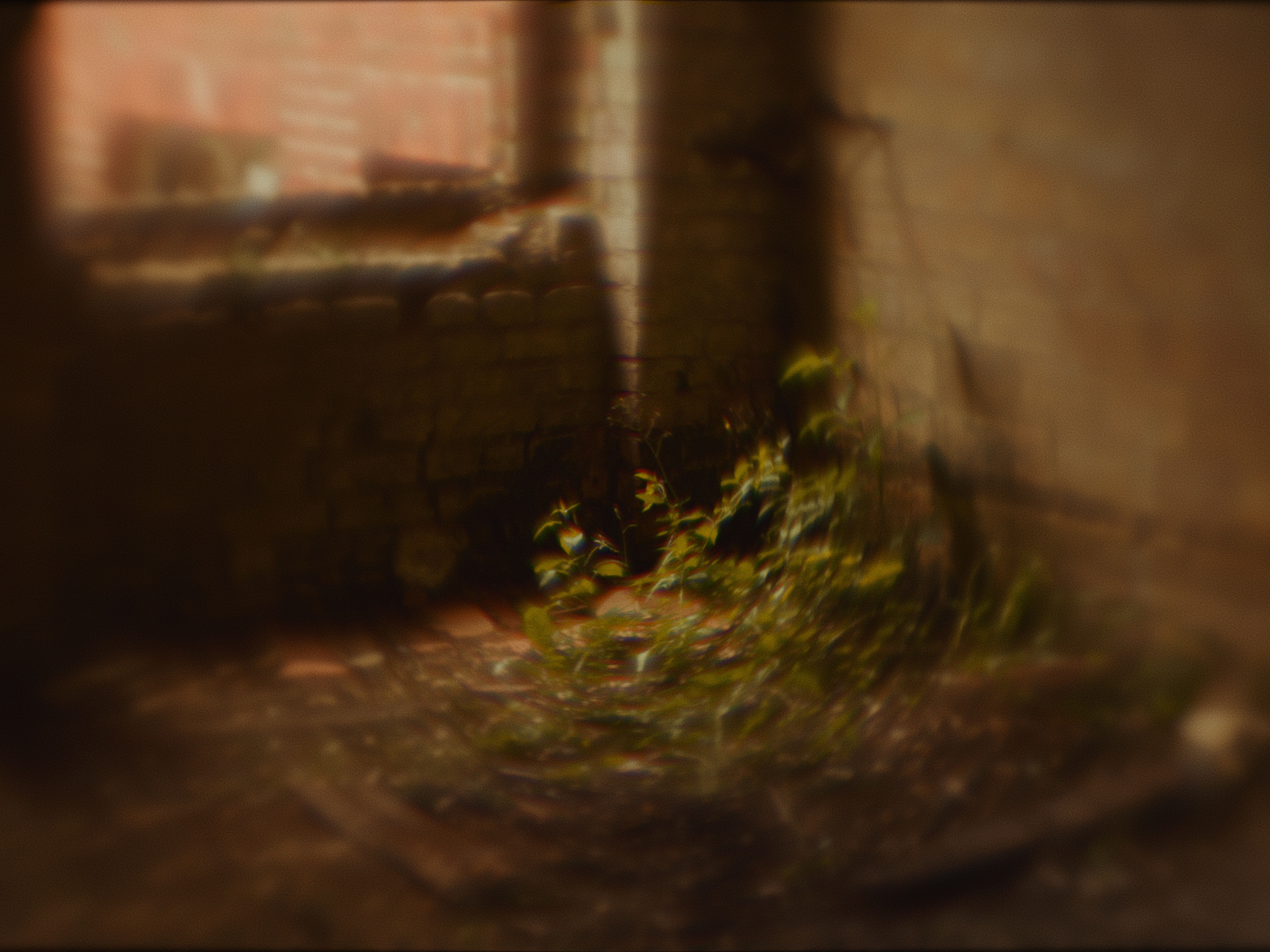
Can you talk about your approach to sound design in Dreaming Is Not Sleeping?
For me, sound transcends mere accompaniment; it constitutes the ontological foundation of cinema—the invisible architecture that shapes temporal and spatial perception. Functioning as an audio-vision, sound does not merely synchronise with the image; rather, it reconfigures it, generating a perceptual synthesis wherein neither element exists independently. One might argue that sound operates on a primal, subconscious level, bypassing the cerebral to evoke visceral emotion. In my practice, I elevate sound to the status of a dialectical counterpoint—a force that both harmonises with and interrogates the visual, with meaning emerging through the tension between presence and absence.
My process deliberately inverts conventional workflows. After finalising the image in post-production—locking the edit as one might seal a medieval manuscript—I embark on a second creative odyssey: crafting soundscapes through methods reminiscent of Hollywood's Golden Age Foley artists, who conjured rain with crumpled cellulose or thunder with sheet metal. Yet, I extend this tradition into the avant-garde, repurposing fractured instruments (a cracked violin, a detuned piano) and found objects to construct musique concrète—a sonic collage wherein raw acoustics are abstracted into new emotional lexicons. In Dreaming Is Not Sleeping, this approach manifests as an autonomous auditory narrative—a heterotopia that coexists with the visual yet resists subservience. The soundscape operates in a liminal realm, neither diegetic nor non-diegetic, evoking acousmatic ambiguity through voices and noises untethered from visible sources, haunting the spectator's imagination.
The spectral, AI-generated voiceover further complicates this interplay. By training a neural network to synthesise a voice inflected with deliberate imperfections and an uncanny cadence, I engage with questions of posthuman authorship. This experiment echoes the synthetic lament, probing whether AI can channel the semiotic—the prelinguistic pulse of art. The result is a disorienting palimpsest: a 'ghost' voice that destabilises the film's ontology, situating it within the hyperobject—a phenomenon too vast and complex to grasp holistically.
AI's role here is not merely technical but metaphysical. As I explore its potential in experimental filmmaking, I am drawn to its capacity for generative estrangement—applied to sound, where synthetic textures alienate the viewer to provoke reflection. In sum, my approach treats sound as cinema's unconscious—a realm where meaning is felt before it is understood, where dissonance becomes a form of truth. The image may arrest the eye, but sound, in its mercurial totality, possesses the viewer. It is the medium's shadow self—its breath and its silence.
What do you hope an audience will take away from Dreaming Is Not Sleeping?
Dreaming Is Not Sleeping—as with all my films—is an endeavour where I earnestly strive for the audience to reconnect with themselves, rather than focus on me. My intention is for viewers to forget the director, to transcend the concept of the "film" as a distinct entity, and instead, to become attuned to their own inner landscapes. In essence, it is about dissolving authorship: once the film commences, my role as "author" recedes. What truly matters is the spectator's unique engagement. Jean-Luc Godard once remarked, "Good films get smaller audiences, but more of the viewer." I take this to heart—the true success of a film is not measured by how many people remember my name, but by how profoundly it prompts each individual in the audience to remember themselves, to invest their own dreams and memories into the experience.
Ultimately, my aspiration is both simple and paradoxical: I hope that, in forgetting the film and its creator, the audience will remember themselves. If my film can serve as a mirror, a dream, or a ritual guiding viewers back to their own reflections, then I have achieved my objective. After the journey of Dreaming Is Not Sleeping, I desire for each viewer to awaken as if from a dream—not recalling me or even the dream itself, but remembering the emotions it evoked and the aspects of themselves it unveiled. That unique relationship between the audience and the film, that personal voyage, is what truly matters to me. Ultimately, when the credits roll and reality resumes, I want each person to carry something of themselves out of the theatre. That is the cinema I believe in—one where the author's voice fades, and the audience's soul resonates.
The Irish premiere of Rouzbeh Rashidi’s latest experimental feature film, Dreaming Is Not Sleeping (2025), will take place at Light House Cinema in Dublin on Saturday, May 3rd, at 7pm.
Rouzbeh Rashidi
Rouzbeh Rashidi (born in Tehran in 1980) is an Iranian-Irish filmmaker. He has been making films since 2000 when he founded the Experimental Film Society in Tehran.
Rashidi’s artistic vision defies traditional filmmaking, challenging traditional storytelling norms and embracing a unique approach to Cinema. His films are a harmonious blend of visual and auditory elements, creating a poetic experience for the audience. Rather than following conventional scripts, Rashidi delves into the realm of experimentation, using unconventional screenplays and texts. For him, creating moving images is not just about conveying a story but about embarking on a journey of exploration and self-expression.
His work is deeply engaged with film history and primarily concerned with mysticism, philosophy, esotericism, cosmology, phenomenology, and hauntology. The films are wildly experimental and often surrealist, magical realist, and mysterious and have been associated with the Remodernist movement. They are unified by his oneiric imagination, idiosyncratic working methods, and the dreamlike experience of watching them.
In 2019, Rashidi founded the EFS Film School, where he has since been teaching and mentoring a diverse group of filmmakers and artists under its banner, assisting them in discovering their unique voices.
